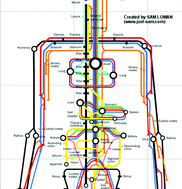Fluid mechanics of eating, swallowing and digestion – overview and perspectives
Abstract
From a very simplistic viewpoint, the human digestive system can be regarded as a long tube (with dramatic variations in diameter, cross-section, wall properties, pumping mechanisms, regulating valves and in-line sensors). We single out a few fluid mechanical phenomena along the trajectory of a

- This article is part of the themed collection: International Symposium on Food Rheology and Structure

 Please wait while we load your content...
Please wait while we load your content...